Sleeve Insignia General Officers and Staff Officers |
||
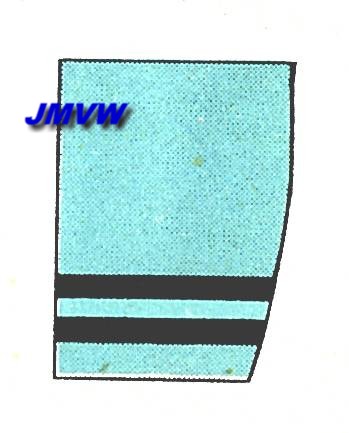 |
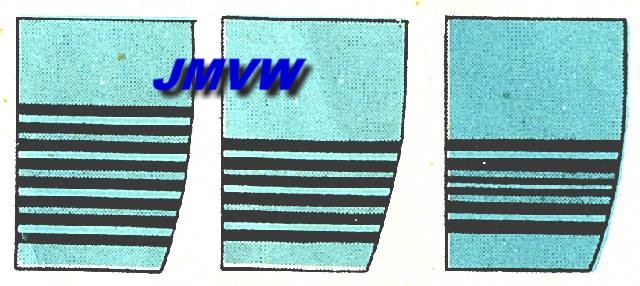 |
|
|
Air Commodore, Group Captain, Wing Commander, Squadron Leader |
||
THE
RAF BELGIAN SECTION
1940-1946
BADGES AND INSIGNIA
Already from
the start in 1940 all officers, NCO's and men were incorporated
in the Royal Air Force Volunteer Reserve.
But it was only on June 4 1942 that their situation was officialised.
RANK INSIGNIA
All Belgians wore the British RAF Rank Insignia.
Ranks worn by the Belgian RAF men were :
NCO'S AND MEN |
||
| RAF RANK | ARMY EQUIVALENT |
|
| Aircraftman Leading Aircraftman Corporal Sergeant Flight Sergeant Warrant Officer |
Private Lance-Corporal Corporal Sergeant Staff Sergeant Warrant Officer |
|
| OFFICERS | ||
| RAF RANK | ARMY EQUIVALENT | |
| Pilot
Officer Flying Officer Flight-Lieutenant Squadron Leader Wing-Commander Group Captain Air Commodore |
Sub-Lieutenant Lieutenant Captain Major Lieutenant-Colonel Colonel Brigade General |
|
Sleeve Insignia General Officers and Staff Officers |
||
 |
 |
|
|
Air Commodore, Group Captain, Wing Commander, Squadron Leader |
||
Shoulder Strap Insignia General Officers and Staff Officers |
|
|
Air Commodore, Group Captain, Wing Commander, Squadron Leader |
| Sleeve Insignia Field Officers |
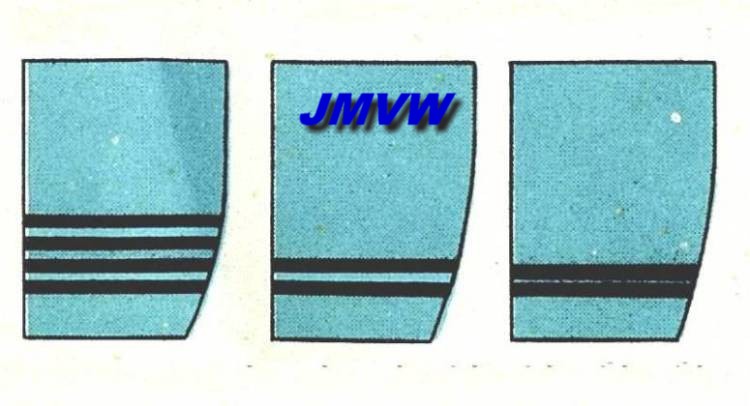 |
|
Flight Lieutenant, Flying Officer, Pilot Officer |
| Shoulder Strap Insignia Field Officers |
 |
|
Flight Lieutenant, Flying Officer, Pilot Officer |
Sleeve Insignia NCO's |
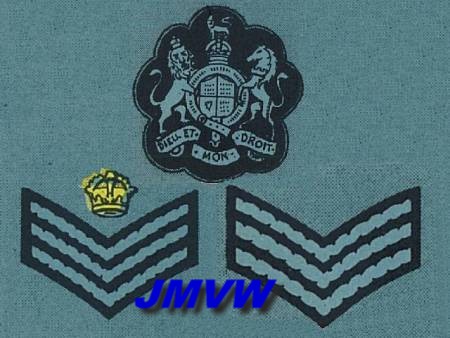 |
|
Warrant Officer, Flight Sergeant, Sergeant |
 |
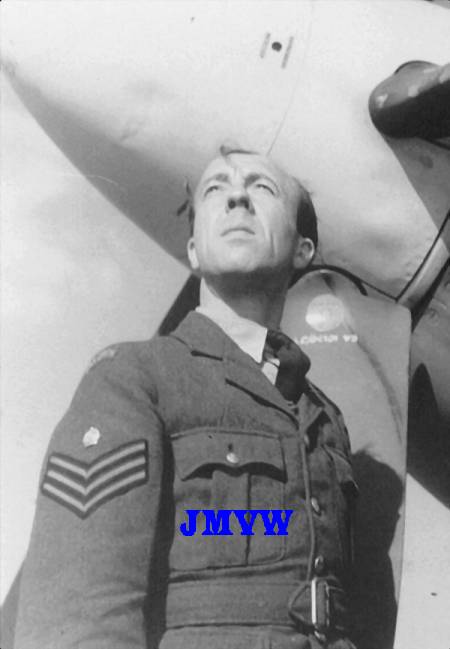 |
|
Sergeant - Pilot BRABANDERS |
Flight Sergeant GREBEUDE of 350 Squadron |
Sleeve Insignia Men |
||
|
 |
|
Corporal, Leading Aircraftman |
||
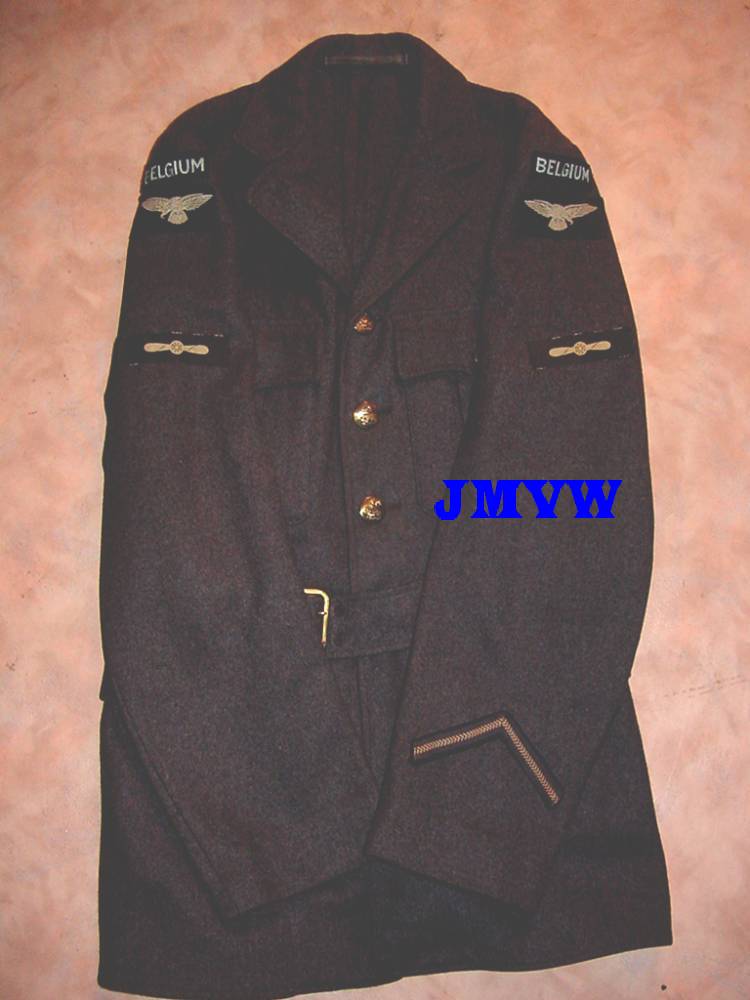 |
| Jacket Leading Aircraftman |
HEADGEAR INSIGNIA
Officers wore a Service Dress Cap or a Field Cap.
NCO's and men always wore a Field Cap.
| Service Dress Cap | ||||
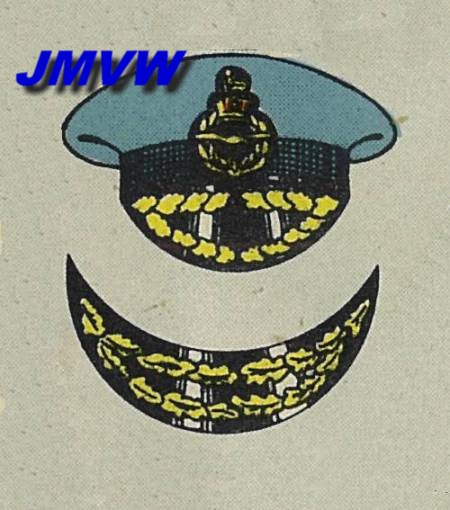 |
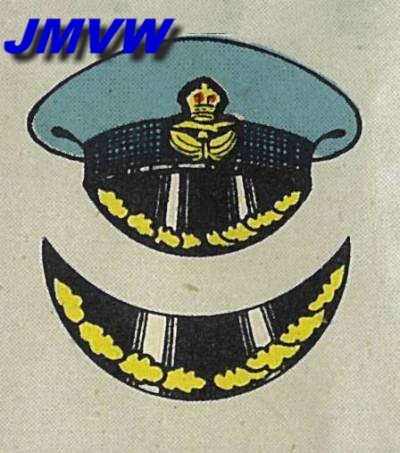 |
|
||
|
Commodore |
|
Group Captain |
|
Squadron Leader - Pilot Officer |
 |
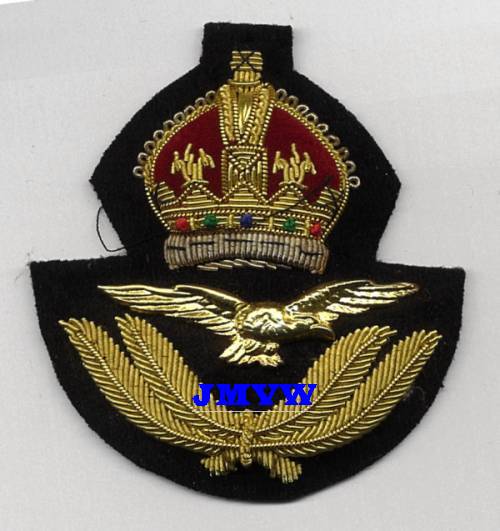 |
 |
||
|
Cap Badge Commodore |
|
Cap Badge other officers |
|
Cap Badge Chaplain |
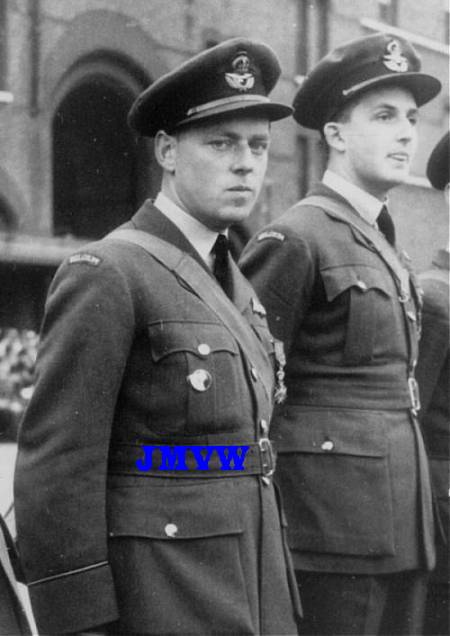 |
 |
|
|
Pilot Officer DONNET with the cap badge for officers |
|
Chaplain
BOONE wearing the cap badge |
Field Cap |
||
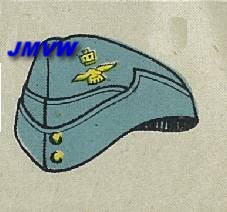 |
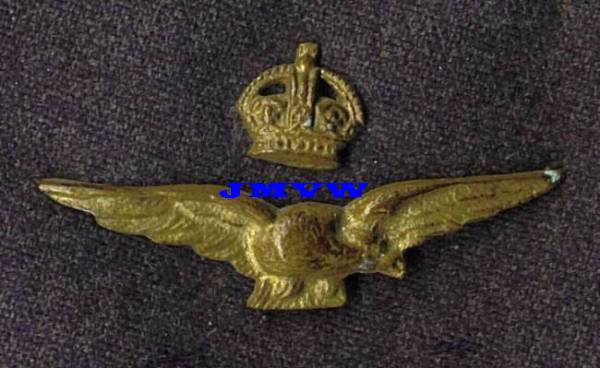 |
|
|
Field Cap with insignia Officers |
|
Insignia Officers |
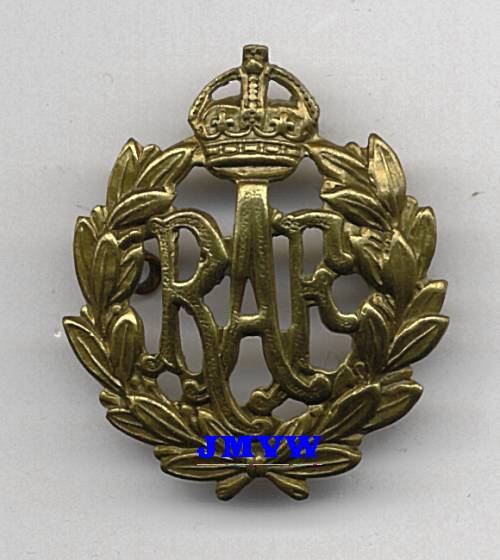 |
|
|
|
Badge NCO's and Airmen RAF |
Badge NCO's and Airmen SAAF | |
Though
Belgian NCO's and Airmen had to wear the RAF or SAAF badge on
their field cap,
some of them wore the brass Belgian Lion.
 |
|
Belgian
Airman RAF with lion on Field Cap. |
"BELGIUM" ARM TITLE
Officers, NCO's and Airmen wore a "BELGIUM" title.
Light blue capital letters on a dark blue background.
Officers wore a curved arm title, NCO's and Airmen a rectangular arm title.
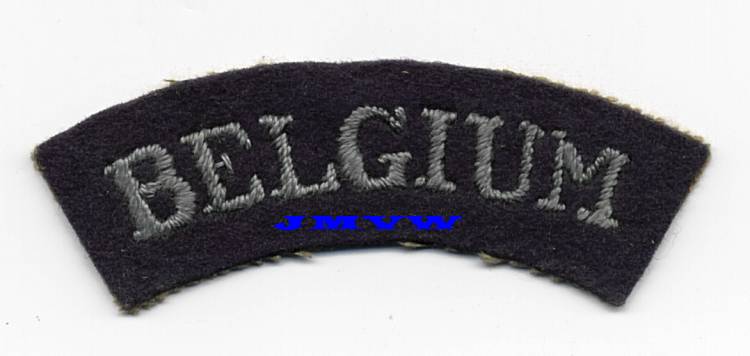 |
|
Arm Title officers, embroidered version. |
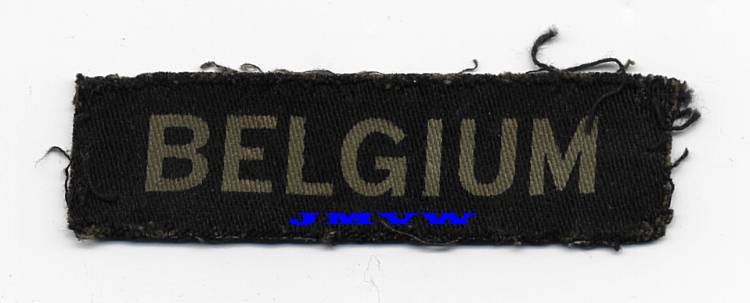 |
|
Arm
Title NCO's and Airmen, printed version. |
 |
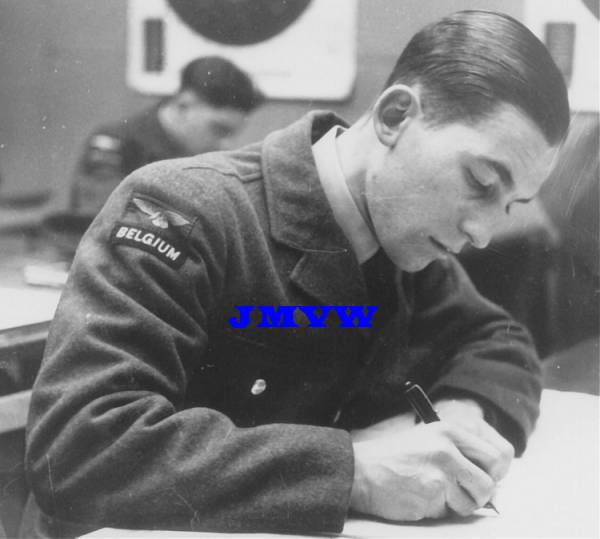 |
|
|
Belgian RAF Officer with curved "BELGIUM" title |
|
Belgian Airman with rectangular "BELGIUM" title |
AIRCREW BADGES
Pilot Wings
Outstretched
wings mostly 10cm from tip to tip.
The wings support a laurel wreath encircling the RAF monogram or
the SAAF herladic shield, with above a King's crown.
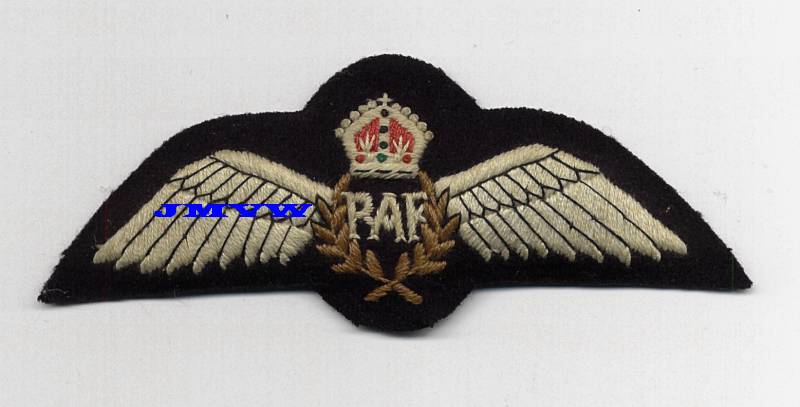 |
|
Pilot Wing RAF |
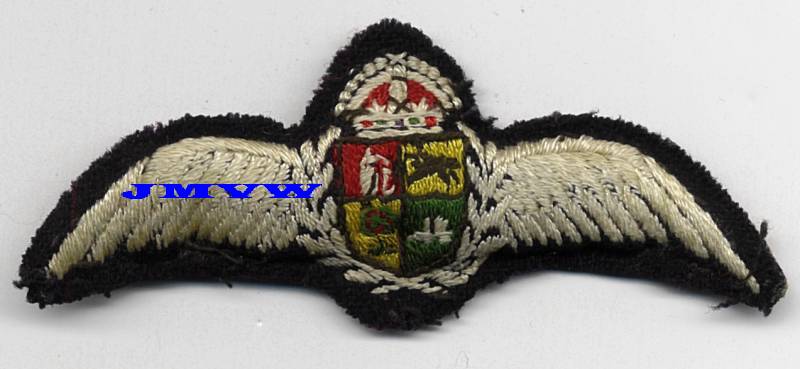 |
|
Pilot
Wing SAAF |
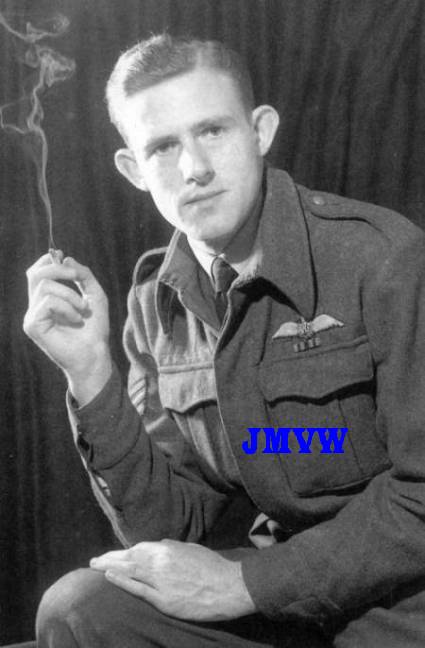 |
||
| Belgian Sergeant Pilot VAN MOLKOT with RAF wing. | ||
 |
||
| Battle Dress blouse of
Flight Lieutenant ROEL. He obtained his wing while serving at the S.A.A.F., and was later transferred to the RAF. |
Some Belgian Pilots were to old for flying duty when they arrived in the United Kingdom.
They were incorporated into the RAF, but not as flying personnel.
Though they didn't fly anymore as a pilot, they were allowed to wear their Belgian wing on the RAF uniform.
 |
|
Belgian
wing as worn on the RAF uniform. |
 |
|
Captain CAJOT wearing his Belgian wing and the "VR" collars. |
After the
War, once reintegrated in the Belgian Air Force,
Belgian pilots were allowed to wear the "small wing"
version of the RAF wing on their uniform.
 |
|
Normal wing with the small wing beneath. |
Half brevets
A lot of Belgians obtained one of the following brevets which entitled them to wear the corresponding half wing.
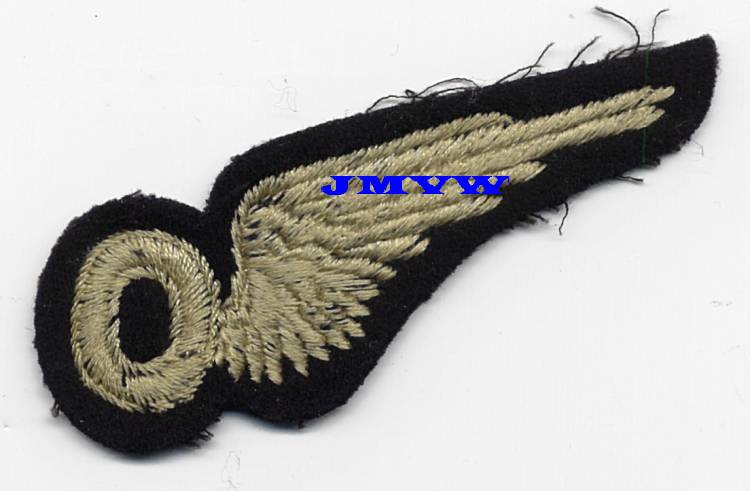 |
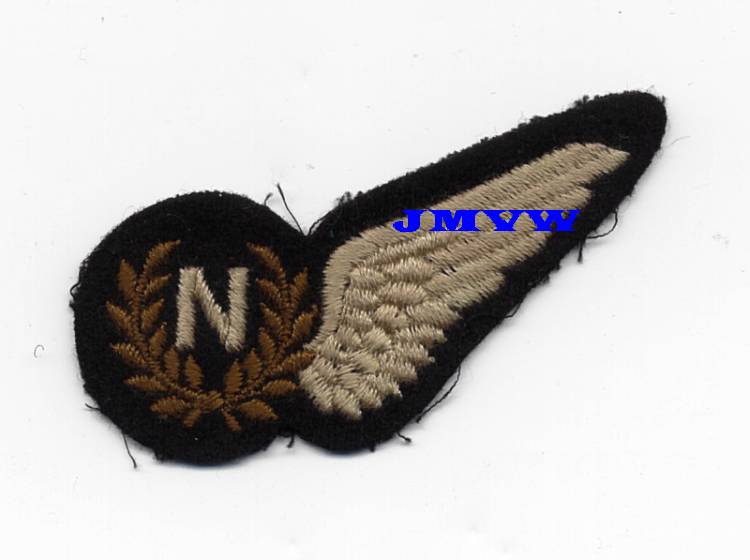 |
|
|
Half Wing Observer until 1942 |
|
Half Wing Navigator from 1942 |
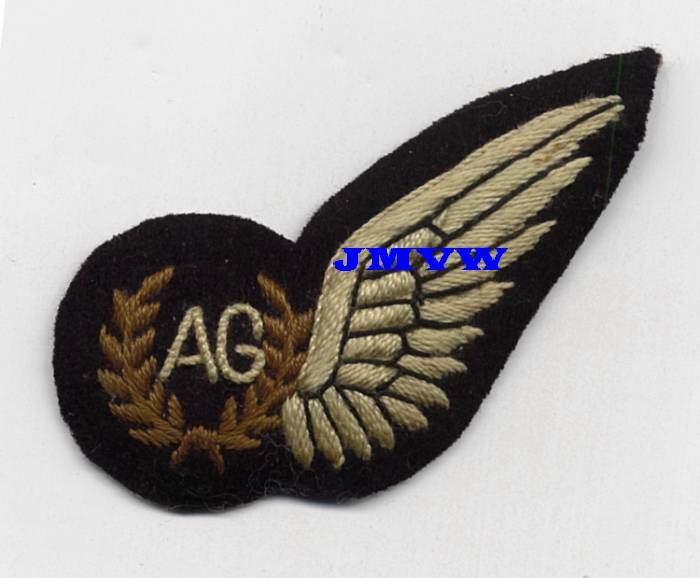 |
 |
|
|
Half Wing Air Gunner |
|
Half Wing Air Bomber |
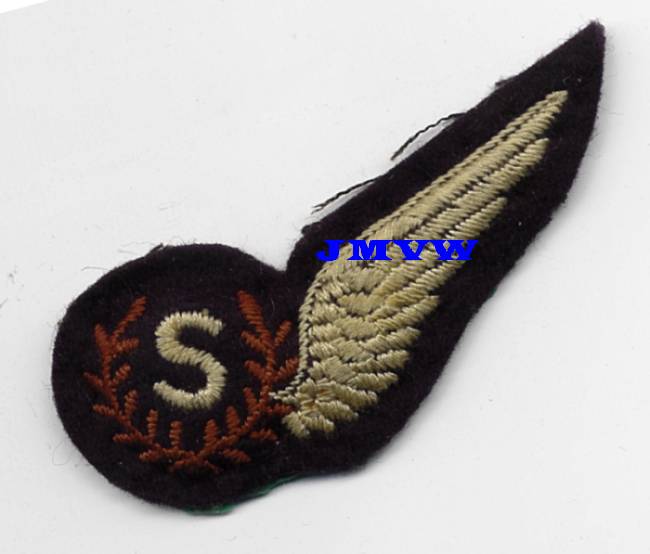 |
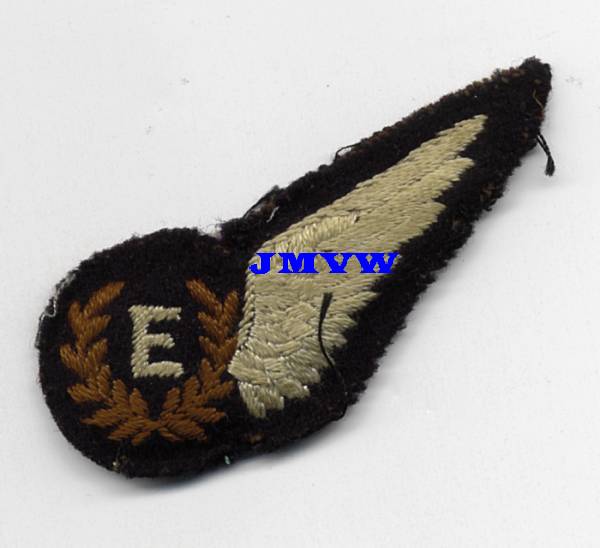 |
|
|
Half Wing Wireless Operator |
|
Half Wing Flight Engineer |
|
||
Half Wing Radio Observer |
||
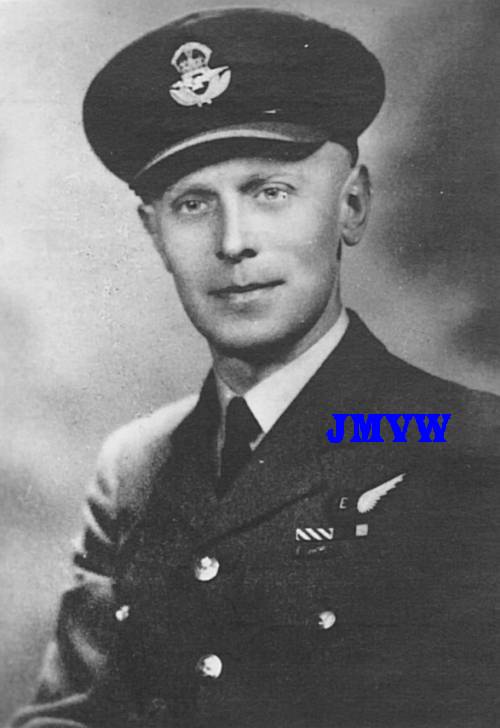 |
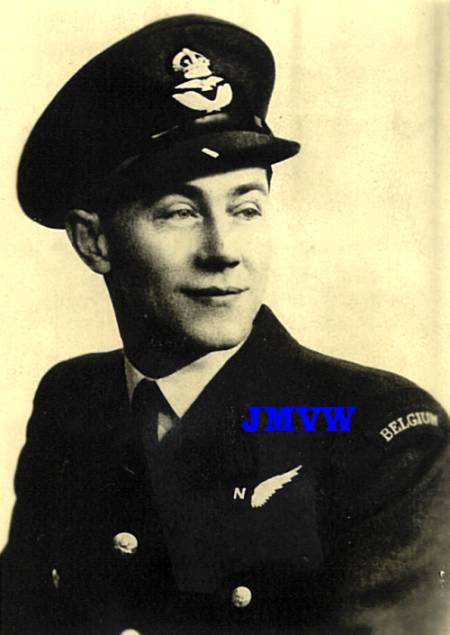 |
|
| Flying
Officer DEBROCK, DFC, with the Flight Engineer half wing. |
Flying
Officer DELBROUCK with the Navigator half wing. |
COLLAR BADGES
As far as known only 2 collar badges were worn by the Belgian RAF men.
The first is the "VR" badge, abreviation for Volunteer Reserve.
As was agreed between the Belgian Government in Exile and the British Governent, everybody was incorporated in the RAF Volunteer Reserve.
Normally it meant that the VR badge, brass version, had to be worn on the collars, but this was only done by some.
Most of the RAF men did nor wear the VR collars.
2 versions
are known to have been worn by the Belgians :
the embroidered and the brass version.
The embroidered version was worn on both arms.
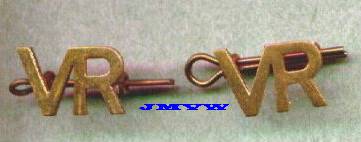 |
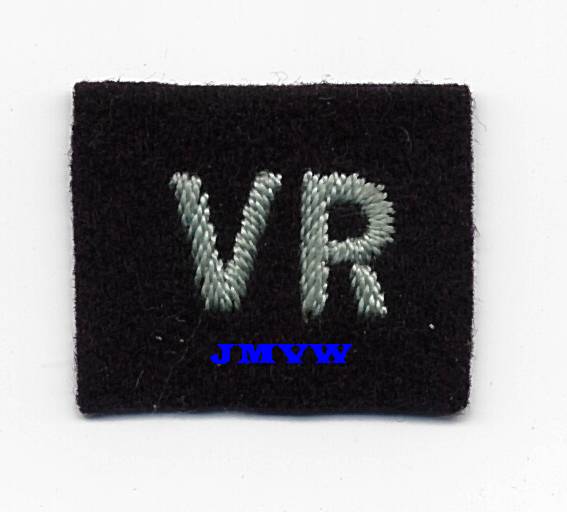 |
|
| brass version | embroidered version | |
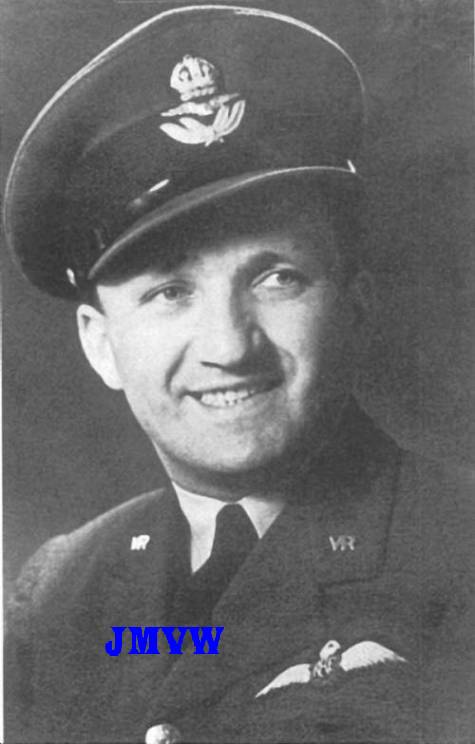 |
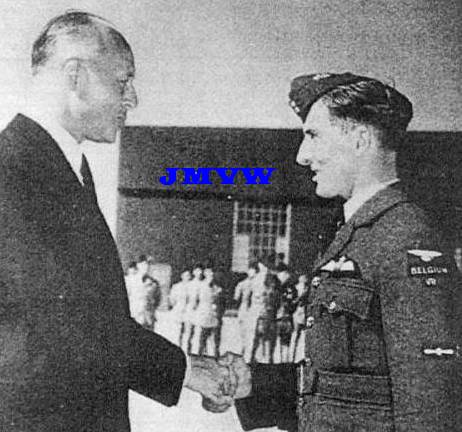 |
|
| Belgian Pilot Officer wearing the brass version | Baron
Silvercruys, Belgian minister to Canada,
congratulating Leading Airman VAN WYMERS on the occasion of the wings ceremony, somewhere in Canada. Note the "VR" badge beneath the "BELGIUM" title. |
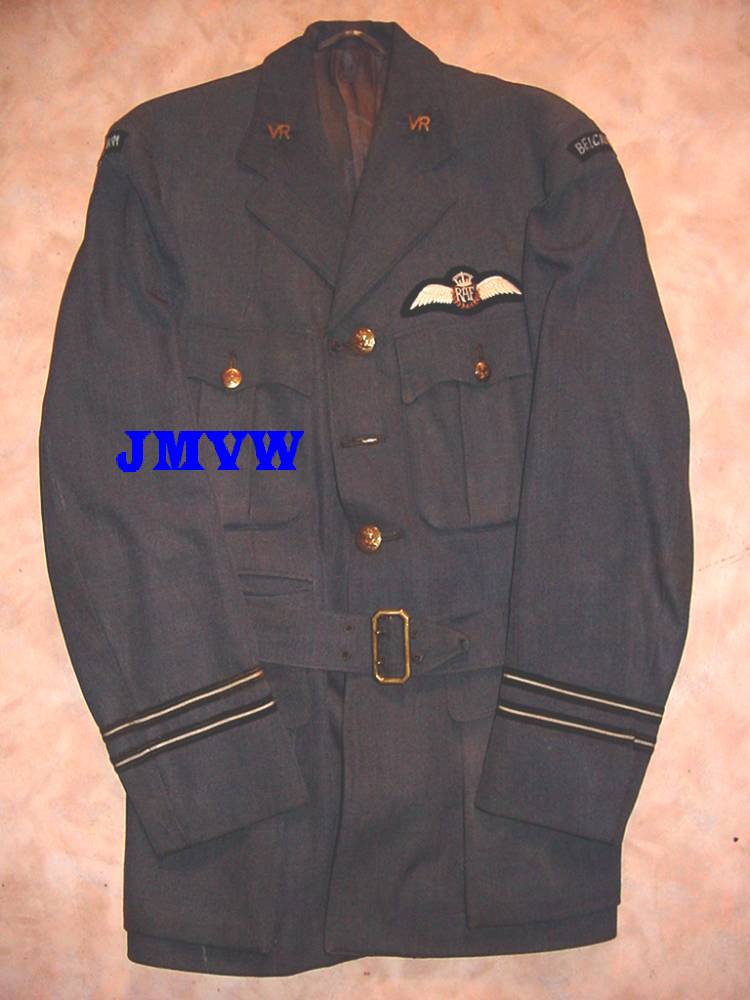 |
| Jacket Flight Lieutenant wearing the brass "VR" collar badges. |
The second known collar badge is the winged RAF cross, worn by the chaplains.
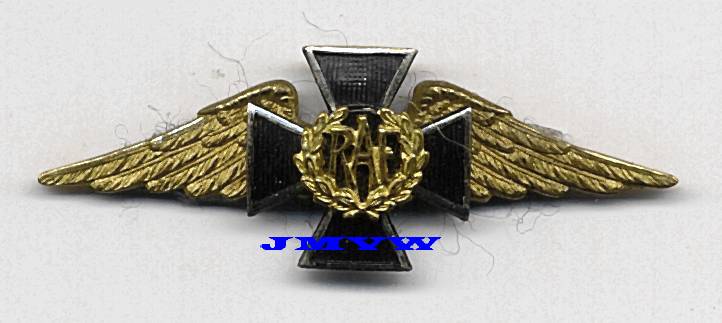 |
| chaplain collar badge |
SHOULDER EAGLE
All NCO's and airmen wore a pair of shoulder eagles.
A flying
eagle in light blue embroidered thread, on a blue-grey rectangle.
For tropical use : a red flying eagle on a khaki rectangle.
 |
| Printed version |
|
Embroidered version |
|
Tropical version |
BREAST POCKET BADGES
4 Breast Pocket Badges are known to have been worn by the Belgian RAF military.
609 (West Riding)Squadron, the two Belgian squadrons 349 & 350, and the Belgian Technical Training School.
Crest 349 Squadron
The crest shows two crossed morning stars.
The morning star is a historic and Belgian national weapon used in 1302 in the
Battle of the Golden Spurs
when the Flemish and Walloons defeated the common French enemy.
The Crown is the crown of King George VI.
The motto "TO BE OR NOT TO BE" resumes the meaning the War had for everybody and
for Belgium in particular.
The original is kept at the College of Arms
Each member of the squadron,
present in June 1944, received a copy of the scroll with crest, signed by King
George VI.
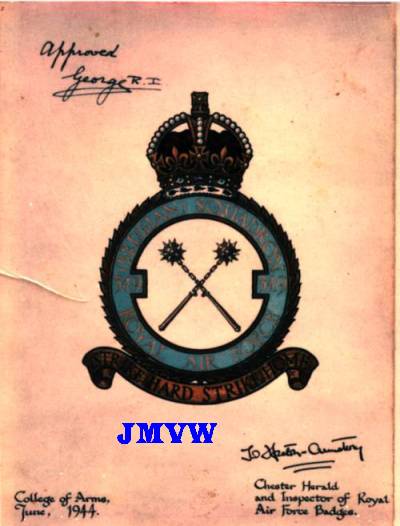 |
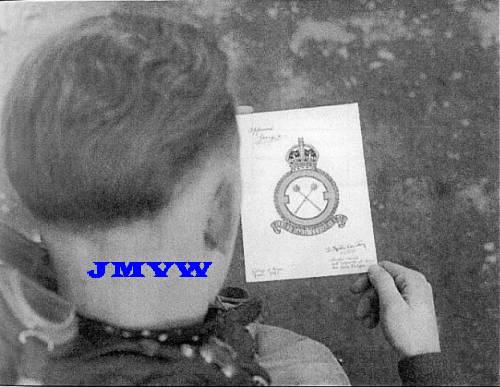 |
|
|
Copy of the scroll
with crest, |
|
Flying Officer VAN DE
VELDE |
Crest 350
Squadron
The crest was invented
by the squadron's Chaplain Clément Boone.
It represents the head of Ambiorix, chieftain of the tribe of
Eburons.
The Crown is that of King George VI.
The motto, "Belgae Gallorum Fortissimi" ("Of all
the inhabitants of Gaule, the Belgians are the bravest")
is inspired of "The Gaelic War" by Julius Caesar. The
original is kept at the College of Arms
Crest Belgian Technical Training
School
The design was approuved by the Chester Herald and Inspector of Royal Air Force
Badge on July 2 1946.
It consists of the cap badge, composed of a propeller and a cog-wheel, worn by
the Belgian technical specialists
of the "Aéronautique Militaire" in 1939-1940.
The motto, "Labor omnia vincit improbus" ("Persistent work overcomes everything")
resumes the hard work that was delivered
by the tecnical personnel in maintaining the planes in an utmost condition.
Due to a unknown reason, the first badge was handed over by the British
ambassador in Belgium to the School Commander in July 1947.
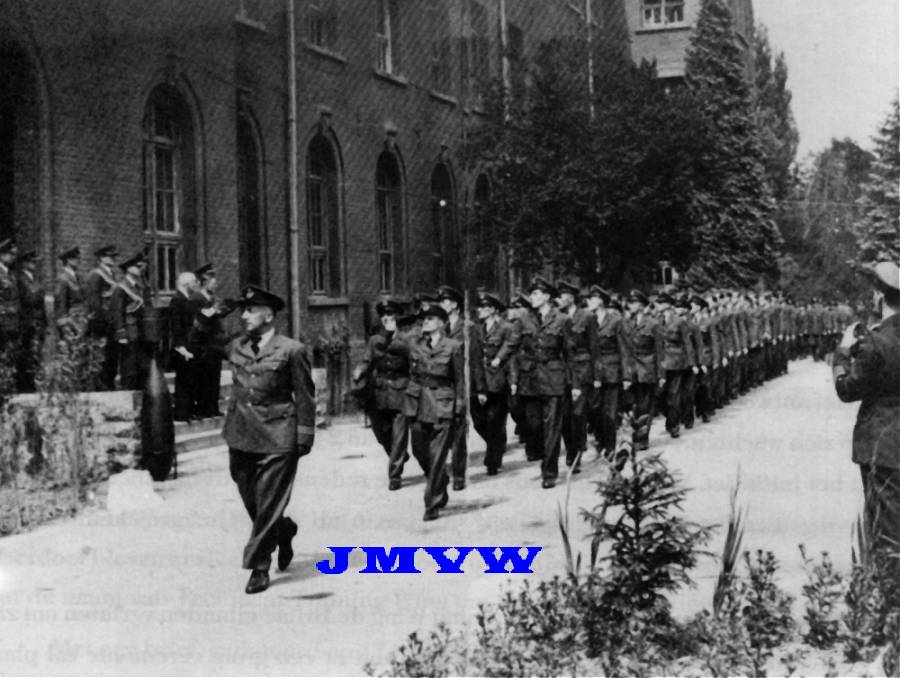 |
|
July 1947, Parade at Safraanberg at the occasion of the handing over of the first badge. |
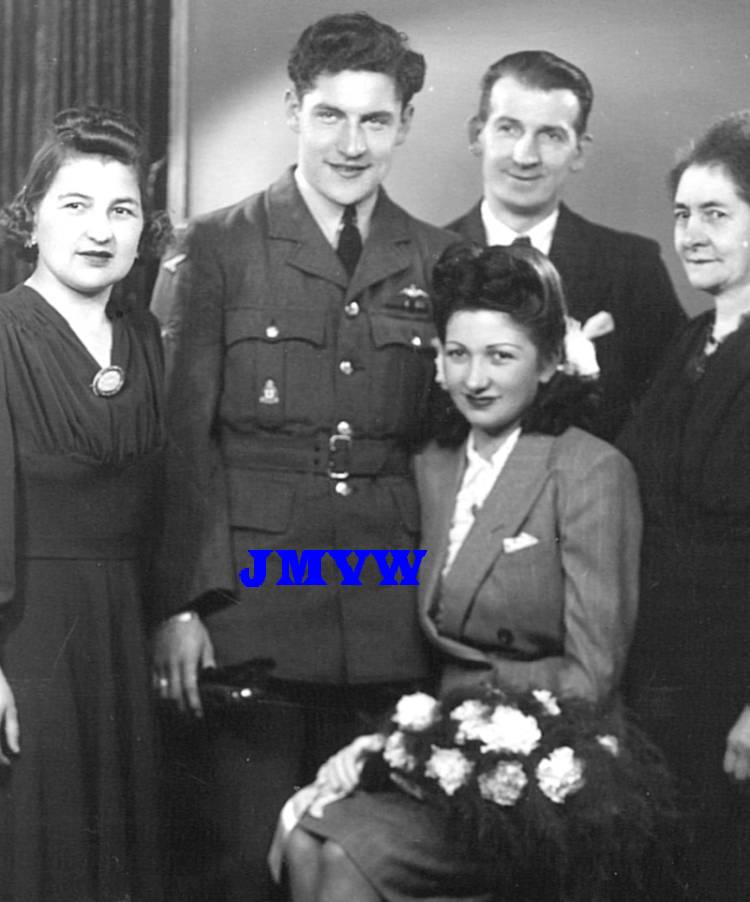 |
| Technician Willy COULBEAU wearing the pocket badge on the day of his wedding, end 1947. |
Crest 12th Bomber Squadron S.A.A.F.
Many Belgian pilots who received their training at the S.A.A.F. were assigned to
the 12th S.A.A.F. Bomber Squadron.
They wore the breast pocket badge of the squadron.
THE "CLUBS"
3 "clubs" existed during the Second World War.
Qualification for membership depended on a specific act of courage.
The "Caterpillar" Club.
The club was founded in 1920 and was reserved exclusively to those who had saved their lives with the Irvin air chutes.
Their names
were recorded in the Club Register kept at the premises
of the Irvin Air Chute of Great Britain Limited, Letchworth,
England.
Each pilot who communicated his name and date of "jump", received a golden caterpillar with small rubis as eyes.
Red eyes when he bailed out over land, blue eyes when he bailed out over sea.
They wore it under their wings, though it was not an official badge.
 |
|
RAF Pilot Wing with caterpillar beneath |
|
detail of caterpillar |
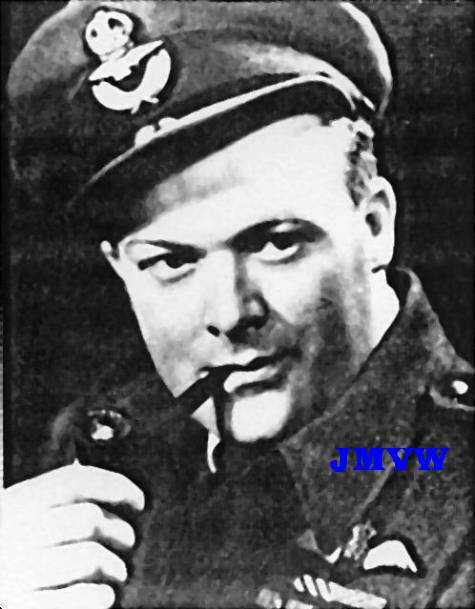 |
|
Flying
Officer PRÉVOT, member of the Caterpillar club and the
Winged Boot club. |
The "Flying Boot" Club.
This club was reserved to those who managed to escape from occupied territory after being shot down.
Only a few Belgians had the privilege to become a member of this club.
They wore their badge on the inside of their jacket.
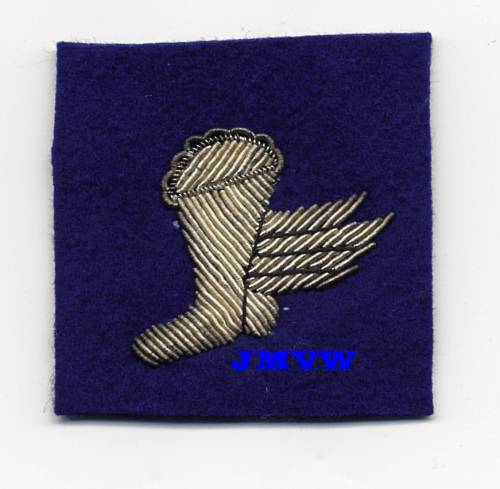 |
|
Embroidered Flying Boot as worn on the service-dress jacket |
The "Goldfish" club.
To be eligible one had to jump out of his plane above sea, or had to crash with his plane into sea.
Once rescued they could apply for membership.
They wore their badge on the inside of their jacket.
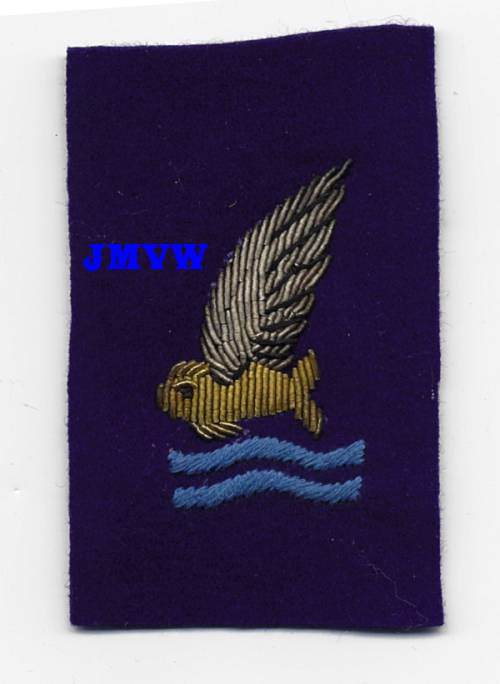 |
|
Embroidered Goldfish as worn on the service-dress jacket |